
I’m really glad to announce that we have made some progress in regional language representation in national-level print advertising in India! Minor progress, but progress worth noting!
Let me demonstrate the progress with 2 recent national-level print advertising campaigns, by Rasna’s Honey Vita and Netmeds.
Rasna Native Haat Honey Vita
Rasna’s Native Haat brand, Honey Vita (that I often confuse with Complan, for the colors used, and completely ignore the ad as a result) had released a series of print ads in April, in multiple city-level editions of The Times of India. Here are the ads, with the dates and cities.
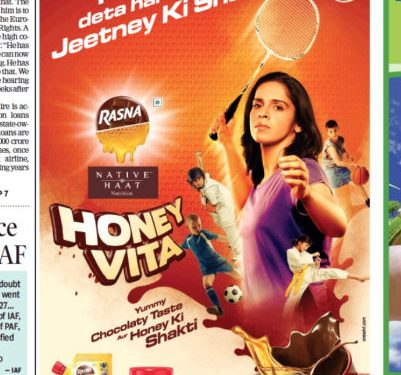
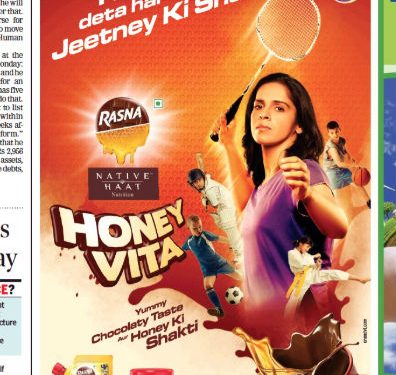

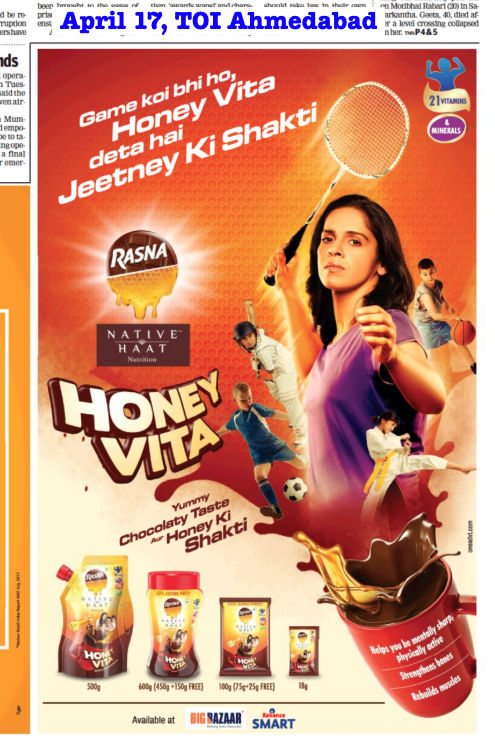

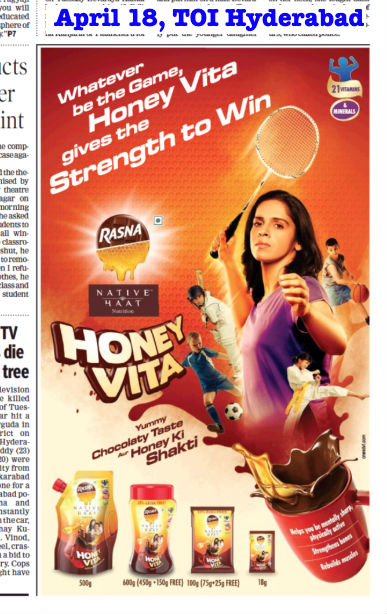

The small change I notice is this: 14th Bengaluru and 18th Hyderabad have English captions! The rest are all in Hindi, written in Roman (English) script. In fact, a second Bengaluru ad too has a Hindi caption in Roman script.
But the fact that they tried both – Hindi in Roman, and English, for Bengaluru is the small start I’m referring to.
Questions:
Doesn’t Rasna want its ad to work harder in Ahmedabad, Kolkata, Bengaluru and Hyderabad? How much more expensive is it to get a regional language (Gujarati, Bengali, Kannada and Telugu) copywriter and create local language captions and use them in Roman script (English text)? I’m very sure it is not expensive at all, having been in an ad agency for 5 years. Is it cumbersome? Oh yes, definitely.
There is extra coordination in getting the local language captions, checking them for contextual accuracy. But this is not rocket science. And the pay-off? Immense! You speak in a language of the region you are advertising in. And, it is not written in local language script (which may not be easy to read for many locals themselves since they may have lost touch with the written script but do speak it day to day). The local language caption (released along with a English-only caption on another day) speaks to the region unlike the English-only caption or worse, Hindi written in Roman script.
Is Rasna’s assumption, in releasing Hindi-written-in-Roman-script in Ahmedabad, Kolkata and Hyderabad… ‘Hindi chalta hai’ in those regions? And that the interest and love for local languages is completely dead in those cities? That’s surely not the case, I’d wager. The larger point is in assuming that Hindi is good-enough to communicate with the people in those cities. At least in Bengaluru, they did a kind of an A/B test, trying both Hindi and English. Kannada (in Roman script) and English would have been beautiful!
But, as I mentioned before, they could have gone with the Hindi caption for all cities. But they chose to add English too. That is a good start, and some small progress in not lazily or arrogantly assuming that Hindi is good enough as a pan-Indian language for marketing communication.
Netmeds
Again, very small progress, but worth mentioning!
Here are the Netmeds ads from today (April 23, 2019) – Times of India, multiple cities.
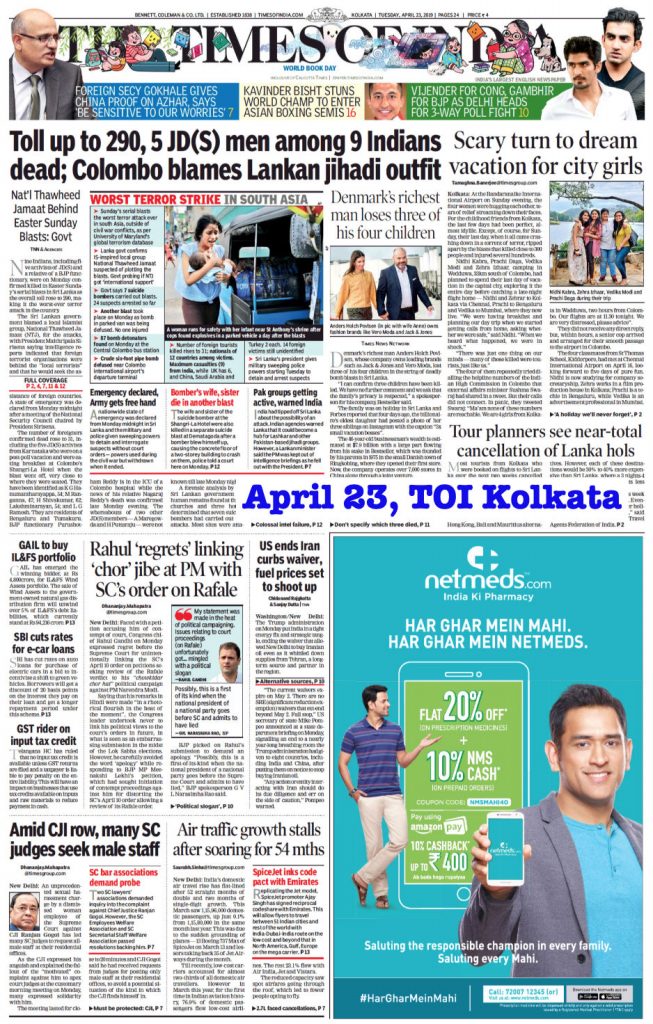
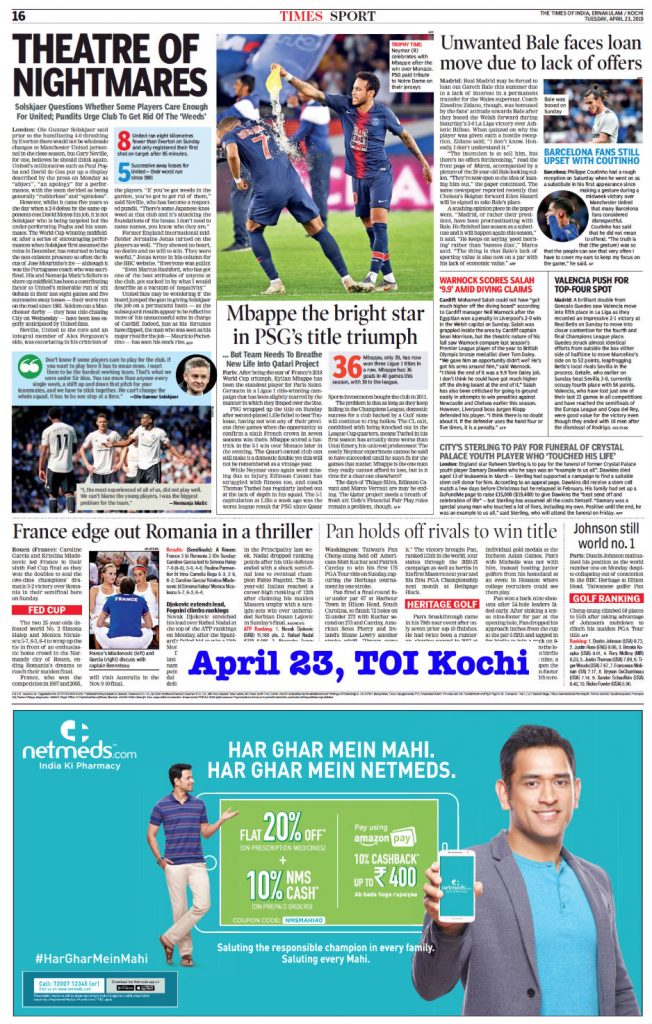
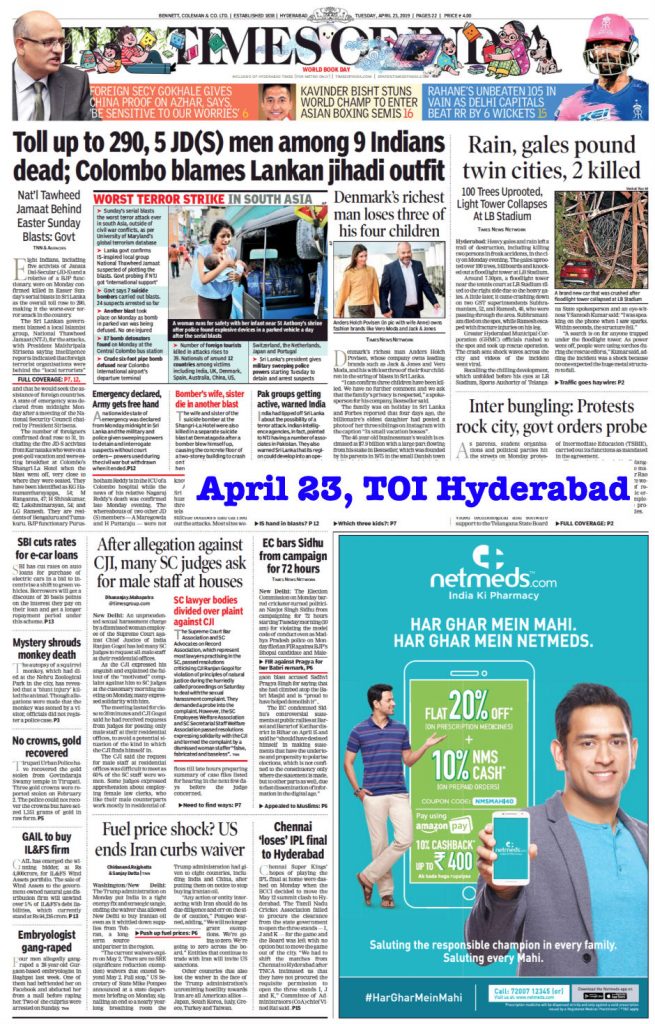
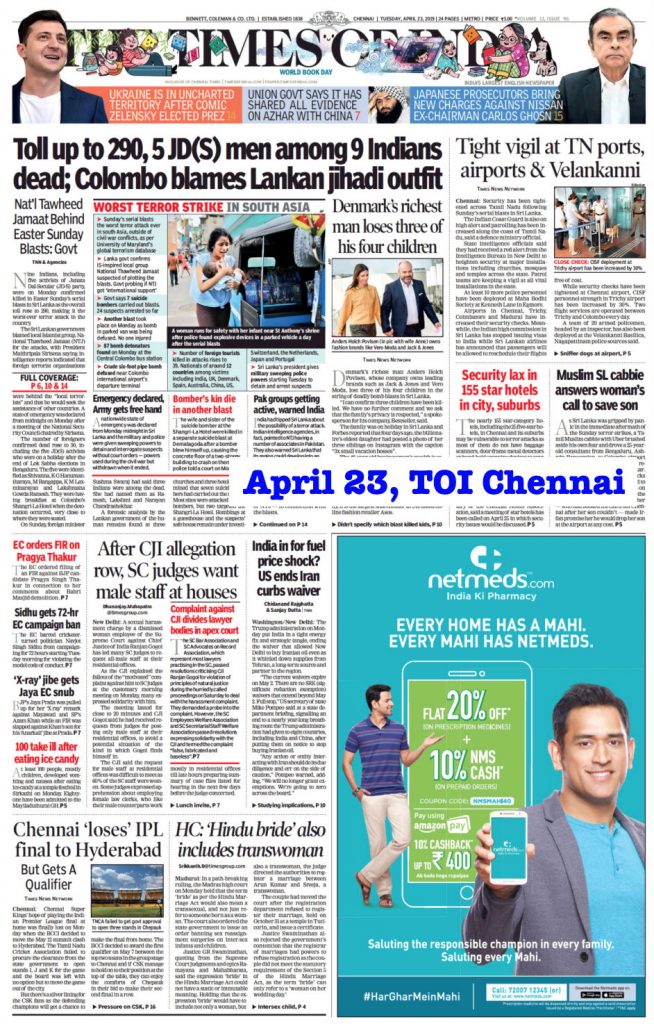
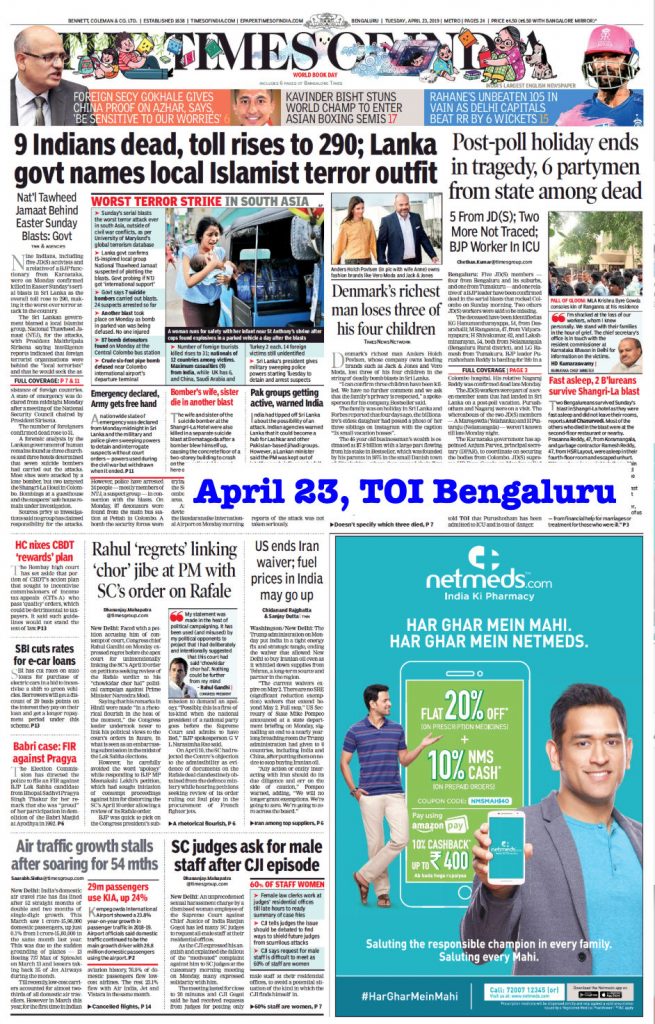

What’s the minor progress? Oh yes, Chennai! Chennai has an English caption! What led to this glorious change of heart? If they can go with the Hindi caption (written in Roman script) for Kochi, Kolkata, Ahmedabad, Bengaluru and Hyderabad (because Hindi ‘chalta hai’), why not Chennai too? Some research led them to believe that the people of Chennai would completely ignore a Hindi caption? Whatever the reason, this is minor progress that brands and agencies have started to think.
But, I should also add that Netmeds’ English translated caption is wrong 🙂 It says,
‘Every home has has a Mahi.
Every Mahi has Netmeds’,
while it should be,
‘Every home has has a Mahi.
Every home has Netmeds’ – if you translate the Hindi caption 🙂
The same questions, from Rasna Honey Vita, apply to Netmeds too.
- Does Netmeds assume that Hindi is good enough for Kochi, Kolkata, Ahmedabad, Bengaluru and Hyderabad? Wouldn’t they want their communication to work really harder for the money they are spending? How difficult or expensive is to get Malayalam, Bengali, Gujarati, Kannada and Telugu captions, written in Roman (English) script? Wouldn’t that truly speak to the population in those cities?
- English is aspirational, and is all over the rest of the advertisement, with functional information. But that small addition of a regional language caption stands out with its power and appeal! It seems familiar to the people in that city because it is the language they see and hear all over the city. That familiarity, in print, could be a huge advantage!
Beyond the questions, as I mentioned earlier, this is a small progress worth noticing. Not worth celebrating, but I’m glad the brands have started to think!
Previously, on this topic:
